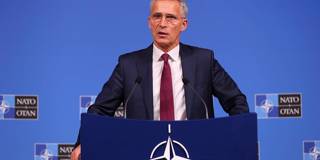Rather than forever circling the wagons, NATO needs to develop its own ideas so that it can respond credibly to its adversaries’ proposals and restore its leadership role. As the alliance’s leaders gather this week, they must recognize that reviving the arms-control agenda is the key to members’ collective defense.
LONDON – Under Donald Trump, NATO was lucky just to stay alive. Indeed, in 2019, French President Emmanuel Macron warned that the alliance was becoming “brain-dead.”
With NATO leaders holding their first in-person meeting with US President Joe Biden this week, America’s allies are breathing a collective sigh of relief. But NATO must still show that its brain, not just its brawn, is adequate to the problems it faces. To that end, arms control would be an intelligent pace to start.
NATO has a proud record on the issue. It advanced its first nuclear-disarmament proposal in 1957, at the United Nations Disarmament Conference in London. Even in the worst period of the Cold War, it sought to negotiate mutual and balanced force reductions with the Warsaw Pact. In 1987, it supported US President Ronald Reagan in negotiating the US-Soviet ban on intermediate-range nuclear missiles, which in turn enabled member states to reduce the number of nuclear weapons committed to NATO’s defense. These arsenals are now down by more than 85% since the end of the Cold War.

LONDON – Under Donald Trump, NATO was lucky just to stay alive. Indeed, in 2019, French President Emmanuel Macron warned that the alliance was becoming “brain-dead.”
With NATO leaders holding their first in-person meeting with US President Joe Biden this week, America’s allies are breathing a collective sigh of relief. But NATO must still show that its brain, not just its brawn, is adequate to the problems it faces. To that end, arms control would be an intelligent pace to start.
NATO has a proud record on the issue. It advanced its first nuclear-disarmament proposal in 1957, at the United Nations Disarmament Conference in London. Even in the worst period of the Cold War, it sought to negotiate mutual and balanced force reductions with the Warsaw Pact. In 1987, it supported US President Ronald Reagan in negotiating the US-Soviet ban on intermediate-range nuclear missiles, which in turn enabled member states to reduce the number of nuclear weapons committed to NATO’s defense. These arsenals are now down by more than 85% since the end of the Cold War.